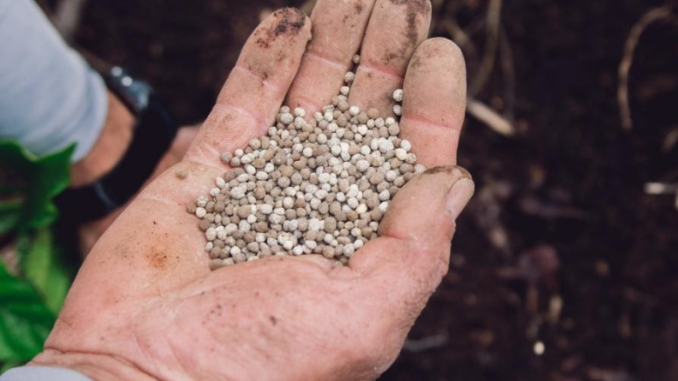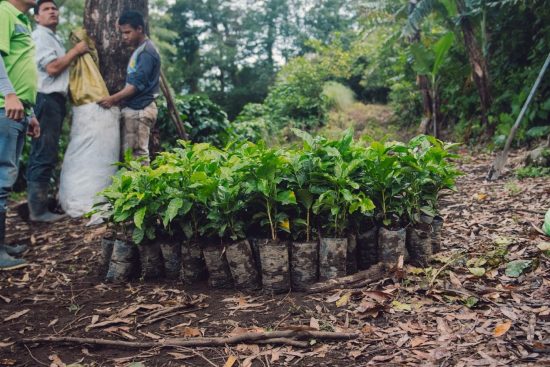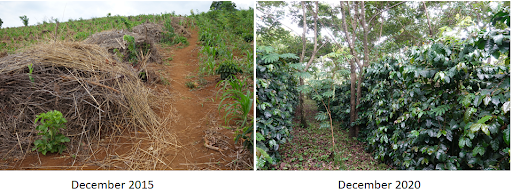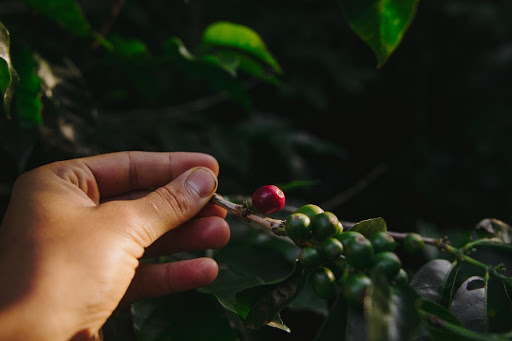
We wrap up our series on carbon in coffee by understanding how social sustainability is crucial to tackling the climate crisis.
BY ALEXA ROMANO
SPECIAL TO BARISTA MAGAZINE ONLINE
Photos by Alexa Romano
Carbon Offsetting Through Coffee
Our three-part series on coffee and carbon has given us strong insight to the voluntary carbon market through a coffee lens. As we’ve learned, the coffee industry generates emissions, especially through roasting and transporting coffee, as well as partnering with organizations that generate their own emissions like dairy and packaging suppliers. We’ve also learned that these carbon credits must be verified under certain standards, many of which are related to projects that restore and protect natural environments. Some of these projects motivate agricultural producers and communities to develop restoration and conservation practices.
However, does coffee have a future in the voluntary carbon market? Can coffee production be a nature-based solution to decarbonization? In this final edition of “Carbon Emissions in Coffee,” we discuss how solid socioeconomic foundations could be the most important place to start.

Carbon-Negative Coffee
The idea of “net-zero” raises the concern that the environment will still not be prioritized. This is because corporations can simply turn to tech-based carbon removals that actually emit more emissions in their production. Another concern is that if we focus on permanent removals, which nature-based offsets can sometimes support (for example, the extraction of biofuels), then these sorts of actions still displace local ecosystems and exclude local community involvement. The point is that whether or not we reduce emissions, in the absence of ecological protection and restoration, the earth’s biosphere will continue to worsen.
Permanent removals do not invest in nature for decarbonization and consequently miss the equitability and justice opportunity to fund marginalized communities around the world to participate in decarbonization. Thus, organizations like Natural Climate Solutions and Our Gorongosa strive for larger and more sustained cuts to carbon emissions by investing in local communities and ecosystems.
The Social Climate
While the climate narrative focuses on emissions reduction, environmental protection, conservation, and alternative bioenergy sources (all important things), this narrative also seems to suggest that social issues are of less importance compared to the critical mission of decarbonizing the planet.
However, social well-being is in fact crucial to environmental sustainability. One cannot significantly address the environment without first being equipped mentally, socially, and economically. This well-being and social sustainability must be for all—not just for a select and powerful few.
Our Gorongosa’s coffee project not only addresses its carbon impact and engages in environmental conservation projects, but most importantly, recognizes that economic profitability and social sustainability increase the opportunities for taking environmental action.
The coffee project itself has had a direct impact on the communities living within Gorongosa National Park by generating hundreds of jobs. The success of the project has also led to the creation of other eco-enterprises in the park such as cashew and honey production, providing an additional pool of jobs. The combination of industries, regenerative farming techniques, and community projects funded by coffee sales creates an integrated value chain for Our Gorongosa’s producers, resulting in a sense of stewardship for biodiversity in communities.
Similarly, Kellem Emanuele (she/her), chief impact officer at Sustainable Harvest Coffee Importers, goes so far as to say that economic profitability and social sustainability actually kickstart environmental action. Kellem says that “economic concerns are preeminent. They underpin everything. They underpin the ability to take environmental action and they underpin the ability to take social action and to increase inclusivity and accessibility.”
Sustainable Harvest’s belief is that more value needs to shift toward coffee farmers. In partnership with Bellwether Coffee, ASOPEP, and Heifer International, they recently launched a new pricing model initiative developed to help coffee farmers earn a livable income and establish a more equitable coffee industry called Verified Living Income (VLI). Further researchers have found that the best-suited social and environmental contexts are those with a strong economic foundation where economic viability, economic profitability, and opportunities thrive.
Social well-being and environmental health are the same work. Sustainable Harvest and Our Gorongosa, along with other carbon-verified projects and organizations, realize that carbon-negative practices, environmental protection and restoration, and local livelihood cultivation are all necessary to create a sustainable feedback loop.

The Future of Coffee in the Voluntary Carbon Market
Now that we have an understanding of coffee’s role in carbon emissions and socio-environmental responsibility, we realize that coffee farmers have an opportunity to be a part of the voluntary carbon market. This is because coffee farmers are subject to changing climate patterns, economic volatility, and lack of inclusivity. However, coffee farmers might not be incentivized to make changes that protect and even improve the environment. This is because 1) changing their agricultural methods can be risky; and 2) they do not have the resources needed to qualify as a carbon-verified project.
Carbon-verified projects have the potential to greatly contribute to the productivity and sustainability of coffee-producing regions and communities. How could coffee-producing communities be included in the voluntary carbon market in a way that promises profit for farmers by reducing CO2 and sequestering carbon?

Natural climate solutions through carbon-verified projects often benefit local communities, carbon projects, and consumer business alike. Could these carbon solutions, along with organizations such as Our Gorongosa and Sustainable Harvest, inspire more organizations to produce and sell coffee rooted in the belief that the environment’s well-being inextricably depends on human well-being? Hopefully, in the near future, coffee can be one of those industries that restores and protects millions of local ecosystems, both natural and social.

Alexa Romano (she/her) is a recent graduate from Stanford University with an MA and BA in Cultural and Social Anthropology with a double minor in Ethics in Society and Photography. Her research investigates the coffee commodity chain and looks at the mystified, obscured, and ethical/ unethical relations that tether producer societies to consumer societies with a particular focus on Costa Rican smallholder producers. In addition to freelance writing, Alexa is an HIIT instructor with a wellness tech company. Currently, she is learning barista skills at Ritual Coffee in San Francisco. See Alexa’s work here.

